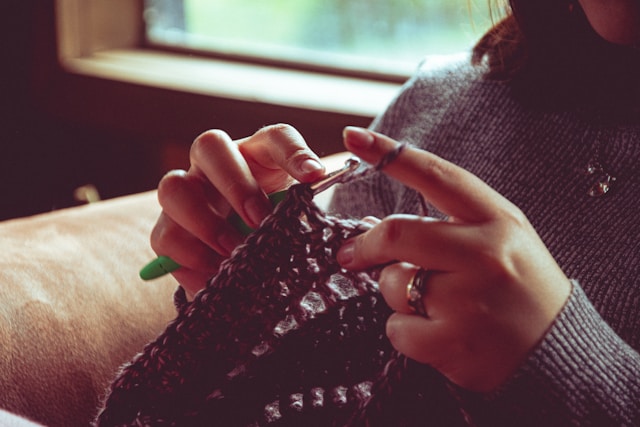
When I was a kid, my grandmother taught me the art of mending socks.
She would sit by the window in the late afternoon light, her sewing basket beside her, and show me how to stitch life back into the threadbare heels.
For the small holes, she used a simple technique: pulling the edges together with a bit of thread, creating a tiny bump that wasn’t too uncomfortable to walk on. For the larger holes, though, she had a different approach.
She’d stretch the sock over a shot glass, weaving new threads across the gap like building a tiny bridge. It took time and patience, and the result, while functional, was never quite the same. The fabric was rougher, thicker, and sometimes rubbed uncomfortably against my heel. But the sock was whole again, at least for a while.
I didn’t think much about those lessons at the time. They were just a part of life, like doing chores or walking to school. But now, as I watch society fray at the edges, I realize those afternoons by the window taught me more than just sewing. They taught me about repair, resilience, and the cost of letting holes grow too large.
The Small Holes
It starts with the little things: a hurtful word here, a dismissive glance there. Minor injustices so small they might seem inconsequential. People get used to the bumps, the slight discomfort of things not being quite right. A coworker makes an offensive joke, and no one says anything. A child is bullied on the playground, and the adults look away. These are the small holes, the ones we think we can live with.
But as the threads of society stretch and strain, those small holes grow. What could have been fixed with a simple stitch becomes larger, harder to ignore, harder to repair.
The Larger Holes
Then there are the larger tears, the gaping wounds that demand more than a quick fix. A community devastated by violence. A nation divided by ideology. The loss of trust in institutions, in each other. These are the holes that need weaving, not just pulling together. They require effort, resources, and cooperation. They take time, and even when the repair is done, the fabric never quite feels the same.
I think about the Civil Rights Movement, about how people like Martin Luther King Jr. and Mahatma Gandhi worked tirelessly to weave new threads into the fabric of their societies. They didn’t just patch the holes; they reimagined what the fabric could look like. They stretched the sock over the shot glass and wove something new, even if it was uncomfortable at first.
The Growing Hole Today
Now, I look at the growing hole in our own fabric. The threads of connection—trust, empathy, shared values—are unraveling. We see it in the way we talk past each other, in the rise of division and the loss of accountability. Leaders exploit these gaps, pulling at the frayed edges, making the holes larger. They absorb outrage, using it to fuel their power, much like Darth Vader in his black armor, feeding on the darkness around him.
And yet, there are still those who resist—not with violence or hate, but with quiet strength. They remind me of my grandmother, patiently weaving thread by thread, even when the hole seems impossibly large.
How we Mend the Hole
The first step is to notice the holes while they’re still small. This requires paying attention, speaking up, and taking action before the fabric tears further. It means calling out the offensive joke, standing up for the bullied child, and refusing to normalize the bumps that make society less comfortable for everyone.
For the larger holes, we need more than just stitching. We need visionaries and leaders who can weave new threads, who can stretch the fabric over the shot glass and build something stronger. This takes courage and sacrifice, but it also takes humility—a willingness to admit that the fabric will never be the same and that discomfort is part of the process.
It’s not enough to resist the forces that tear the fabric; we must also create forces that repair it. This means fostering empathy, building bridges between divided communities, and holding ourselves accountable for the threads we contribute.
The Future of the Sock
As I think back to my grandmother’s socks, I realize that the process of mending is never really done. Even a well-repaired sock will wear out eventually, and the cycle of tearing and mending will begin again. But each repair is a testament to care, to effort, to the belief that something broken is worth fixing.
The fabric of society is no different. The holes may never fully disappear, but we can keep mending, keep weaving, and keep believing that the effort is worth it. Because the alternative—a society too worn and frayed to hold together—is a future we cannot afford.
And so, we pick up our needles and thread, and we begin again.
~
 Share on bsky
Share on bsky
This account does not have permission to comment on Elephant Journal.
Contact support with questions.